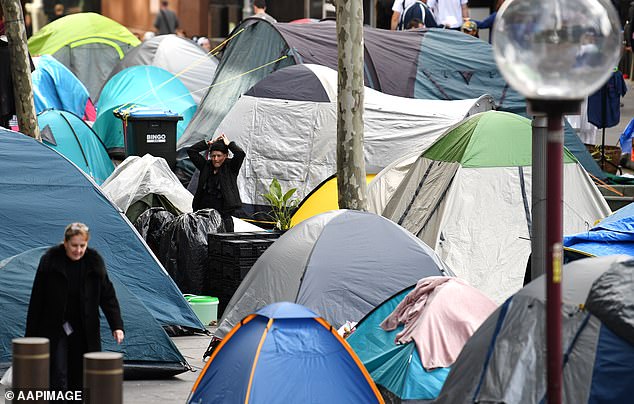Homelessness has increased in New South Wales as the state’s housing crisis pushes increasing numbers of people onto the streets.
The annual street count, released Friday, revealed a 25 percent increase in the number of people sleeping rough statewide.
Authorities found 2,037 sleeping on the streets during the February count, up from 1,623 the previous year.
Some of the biggest increases were in coastal areas, including a nearly 80 per cent rise in the number of people sleeping rough in the Coffs Harbor council region.
Byron Shire, a popular tourist region in the state’s north, had the highest number of people sleeping rough of any local government area in the state.
This and other coastal regions, such as Sydney’s northern beaches, have become home to large camps of homeless people sleeping in tents amid a severe shortage of affordable accommodation.
Some of the biggest increases in homelessness have been in coastal areas, including a nearly 80 per cent rise in the number of people sleeping rough in the Coffs Harbor council region (file image ).
Homelessness Minister Rose Jackson said the regional figures were unprecedented but not unexpected.
“We don’t just need data to tell us this: our regional communities feel it every day,” he said on Friday.
“The sobering street count numbers again paint a harrowing picture of homelessness and street sleepers across our state.”
Jackson said the government was looking at all options to tackle the housing crisis, including through a review of short-term accommodation rules.
Stricter restrictions have already been introduced in Byron Shire, where a 60-day annual limit applies to unhosted short-term rentals.
Among the measures being considered is a short-term rental booking surcharge that could be used to fund crisis accommodation.
Of the people found in the last street count, 64 percent were staying in vehicles, 18 percent in open spaces and 10 percent in makeshift homes.
Another 241 sites were found with evidence of homeless people, such as sleeping bags and personal effects, but without any people present.

